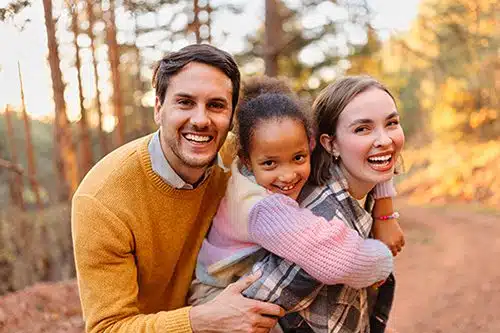
This year’s National Adoption Month theme is “Honoring Youth: Strengthening Pathways for Lasting Bonds.” It seeks to raise awareness about developing a support network for youth in foster care that meets their needs and confirms their identity. This theme highlights the importance of honoring each child and helping professionals create a meaningful adoption journey that promotes lasting stability.
November is a time to honor all the complexities that come with adoption. Today, we’re looking back at how this celebration, the cause of raising awareness, and advocacy for more education on adoption came to be. Join me as I take a peek into the past and how adoption has evolved from a secretive practice to a nationally recognized and celebrated event!
Table of Contents
- The Origins of National Adoption Month
- Current Statistics
- Looking Back – Closed Adoption
- Adoption Evolves
- Understanding Foster Care Adoption vs. Private Infant Adoption
- Open Adoption at Lifetime
- Why is open adoption a good choice?
- Choosing adoption means choosing life
- Lifetime Adoption
The Origins of National Adoption Month
It all began in 1976 when Massachusetts Governor Mike Dukakis initiated Adoption Week to spread awareness of the need for adoptive parents for children in the foster care system. As the idea spread, President Gerald Ford made the first Adoption Week proclamation.
In 1984, President Ronald Reagan proclaimed the first National Adoption Week, to happen the week prior to Thanksgiving. An adoptive father himself, Reagan said in his proclamation how he recognized both the children within the foster care system and also those born from crisis pregnancies. He described birth mothers as being brave and selfless in their decision to choose adoption. Reagan also promoted the adoption of special needs children in the US and overseas. At the time, special needs adoption wasn’t usually acknowledged or encouraged by the public.
Noticing that so many states were embracing Adoption Week, President Bill Clinton extended the week to the entire month of November. He spread the word about initiatives his government created to break down barriers to transracial adoption while also encouraging special needs adoption and adoption from foster care. In 1998, Clinton supported using the Internet to help find homes for children in foster care. George W. Bush was the first president to issue a proclamation about National Adoption Month in Spanish in 2008. Each president has issued a presidential proclamation for National Adoption Month since President Clinton named November as National Adoption Month in 1995. These proclamations serve to honor adoptive families, raise awareness, and encourage action to help children find permanent homes.
Adoption Awareness Month is now promoted and celebrated in communities nationwide. Adoption agencies and other organizations often find this month a great time to help introduce people to adoption and what it might look like in their unique situation.
Current Statistics
As we celebrate National Adoption Month, it’s important to understand the scope of the need. As of fiscal year 2023, there are over 343,000 children in the United States foster care system. Of these children, approximately 36,000 remained in foster care despite being both legally free for adoption and having a primary permanency plan of adoption.
In 2023, 50,193 children were adopted from foster care—a decrease of over 5% from the previous year. This decrease represents a concerning trend, as adoptions from foster care have continued to decline, reaching their lowest level since 2003.
Children eligible for adoption will wait, on average, almost three years for an adoptive family. The average age of adoption is six years old, with 28% of children adopted in 2022 being age nine years or older. In 2023, 37% of children awaiting adoption were 5 years old or under.
When children do exit foster care, 44% of exits in 2023 were due to reunification with birth families, 27% were due to adoption, and 10% were due to guardianship. Of those adopted, 57% were adopted by their foster parent(s) and 33% by a relative.
Looking Back – Closed Adoption
Adoptions have changed drastically within the past 50 years. Traditionally, all adoptions were closed. That meant that there was no interaction between the birth mother and the adoptive parents. Officials didn’t provide any identifying information either to the birth families or adoptive families, so the child didn’t know their birth parents and wasn’t able to get in touch with them. As the child grew up, they often struggled with personal identity because of the lack of contact with their birth family.
Adoption Evolves
Many changes have made adopting a child somewhat different today. Opinions and attitudes toward adoption have changed. Negative experiences with closed adoption forced the process to open up.
Agencies and their policies evolved slowly. Regardless of the changes, some agencies today still have procedures in place that were used 30 years ago. Many of these are failing because they are not meeting the needs of their clients. Successful agencies will continue to operate as long as compassionate and caring social workers are involved.
Some degree of contact through open adoption is by far more desirable to most birth families than closed. Today, many adoption professionals don’t offer closed adoptions but instead offer semi-open adoptions with varying levels of openness. Birth families’ wishes are now being respected, with birth fathers taking a more active role in adoption. Open adoption allows many adoptees to access the needed information to feel whole and at peace with why they were adopted.
With a closed adoption, the child often doesn’t have the option of knowing their birth parents. Information about their adoption, their birth family, and their origins is unavailable to them. Experts agree offering flexibility in adoption to meet the needs of all involved is the most successful way to approach adoption today. The adoptive parents are provided with knowledge of their child’s medical history, which helps should anything go wrong.
Closed adoptions will continue, though the percentage is less than a single digit today. There will always be birth parents and adoptive families who feel it’s best for their situation. Time will tell if it truly was. For now, the benefits of an open adoption far outweigh any other option. Education helps adoptive parents to become more familiar with the benefits to their child, themselves, and the birth parents.
Understanding Foster Care Adoption vs. Private Infant Adoption
While National Adoption Month originally focused on raising awareness about the need for families to adopt children from foster care, it’s important to understand how this differs from private infant adoption.
Age of Children: More than 99 percent of private domestic infant adoptions involve newborns and infants, while the majority of foster care adoptions are of older children. In 2017, the median age of a child in foster care was 7.7 years old. This means families hoping to adopt an infant through the state foster care system may face a long wait.
Purpose and Timeline: Foster care’s primary goal is family reunification whenever possible. Up to half of children in foster care reunite with their primary caregivers. In contrast, private adoption creates a permanent placement from the start. The time to wait for an adoption opportunity is one of the primary differences, with private adoption wait times typically averaging 12 months. In contrast, foster care adoption can range from three to 12 months, depending on the situation.
Cost: Private infant adoption services can cost around $50,000, while adopting from foster care means families will have to pay very little, if anything. In some cases, foster parents even receive a stipend, among other benefits.
Openness: While both types of adoption can include varying levels of openness, the dynamics differ. More than 90% of domestic infant adoptions are at least semi-open, meaning contact with the birth mother is maintained post-placement through letters, photos, emails, phone calls, or even in-person visits. In foster care adoption, there is usually less interaction with birth parents, though this varies case by case.
Who Chooses: In private infant adoption, the prospective birth mother gets to choose the perfect family for her baby from adoptive family profiles, while in foster care, parents usually don’t get a say in which family their child stays with.
The Foster Care Need
Children in foster care who may have experienced adversity at a very young age may require specialized care and support. Many children in the foster care system have different levels of special needs, including emotional and behavioral challenges that a supportive, stable family trained to help children heal from trauma can address.
National Adoption Month serves as a reminder that these children need permanent, loving homes. Whether families choose to pursue foster care adoption or private infant adoption, both paths provide children with the stable, nurturing environments they deserve.
Open Adoption at Lifetime
Our adoption agency encourages birth parents to determine how they want to be involved in their child’s life. While they may be choosing other parents for their baby, the birth parents can create an agreement with the adoptive parents to stay in contact with their child and see them if they want to.
Open adoptions also mean birth parents can pick the family that adopts their baby. Once the baby is born, the adoptive and birth parents can keep in touch. If they choose, birth parents can be active participants in their child’s life.
Why is open adoption a good choice?
Open adoption gives expectant mothers the peace of mind of knowing that their child is being raised by the parents that they chose and that they have the option of getting to know their child over time. It also allows birth parents to create a birth plan that works for them. From choosing the family to determining who gets to be there when they deliver, birth mothers have a say in how they want things to go.
These choices as a birth mother in an open adoption may not exist when choosing another type of adoption, like a closed adoption.
Open adoption is known to be beneficial for all in the adoption triad (adoptive couple, adopted child, and birth mother). For the adoptive family, it gives you access to birth family members who can answer background and medical history questions that you may not be able to. For the child, open adoption provides a sense of connection and completeness. The birth mother can have comfort in the knowledge that her child is growing up safe, healthy, and loved.
Choosing adoption means choosing life
It is common for birth mothers to feel a combination of grief and sadness, denial, and even bouts of depression after placement. However, the sense of hope that comes from knowing they have decided to give their child life will prevail.
Many birth parents share that, while they sit with their grief of not being able to raise their child, they feel a unique sense of optimism about their child growing up in a safe, loving home. Their child has a stable home and a solid foundation to begin their life. This stability is something that is invaluable and is truly a gift in and of itself.
We celebrate these birth parents, not just during adoption awareness month, but year-round, for their loving choice.
Lifetime Adoption
We are grateful to walk alongside expectant parents who are considering placing their baby for adoption. Adoption is one of the most loving decisions parents can make, and we are proud to do our part in promoting modern adoption.
At Lifetime Adoption, we make it our mission to serve women and families of all kinds who are exploring adoption. The truth is we love helping people experience the beauty of open adoption.
It is so rewarding to see how open adoptions connect and bond adoptive families and birth parents. If you are an expectant mother who is experiencing an unplanned pregnancy, we are happy to talk to you about how we can help place your baby into a loving adoptive home.
Lifetime Adoption’s professionals have been helping families since 1986 and look forward to serving many others — during National Adoption Month and beyond. We celebrate adoption — each and every one! We take a kind, caring, and compassionate approach to finding families for children and youth in the United States.
If you are a potential adoptive family and want to learn how we can help make your dreams of parenthood a reality, contact our experienced team at Lifetime Adoption today. We look forward to discussing the adoption process with you.
Editor’s Note: This article was originally published on November 4, 2020, and has since been updated.
Founder of Lifetime Adoption, adoptive mom, adoption expert, and Certified Open Adoption Practitioner (C.O.A.P).
Since 1986, adoption expert Mardie Caldwell has been dedicated to bringing couples and birth parents together in order to fulfill their dreams.
“Many years ago, I was also searching for a child to adopt. We didn’t know where or how to get started. Through research, determination, and a prayer, our dream of a family became reality. I started with a plan, a notebook, assistance from a caring adoption consultant and a lot of hard work; this was my family I was building. We had a few heartaches along the way, but the pain of not having children was worse!
Within weeks we had three different birth mothers choose us. We were overwhelmed and delighted. Many unsettling events would take place before our adoption would be finalized, many months later. Little did I know that God was training and aligning me for the adoption work I now do today. It is my goal to share with our families the methods and plans which succeed and do not succeed. I believe adoption should be affordable and can be a wonderful “pregnancy” for the adoptive couple.
I have also been on both sides of infertility with the loss of seven pregnancies and then conceiving by new technology, giving birth to a healthy daughter. I have experienced first-hand the emotional pain of infertility and believe my experience allows me to serve your needs better.
It is my hope that for you, the prospective parents, your desire for a child will be fulfilled soon.”

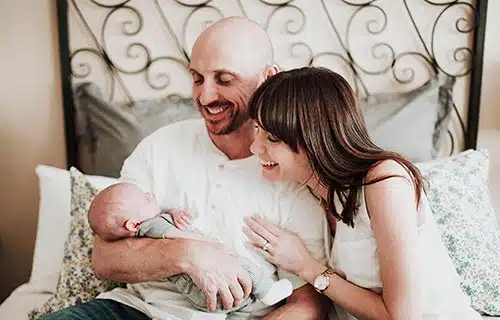
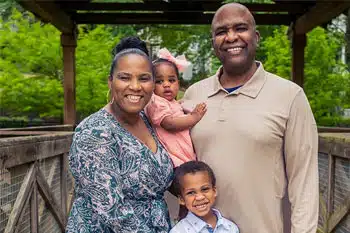
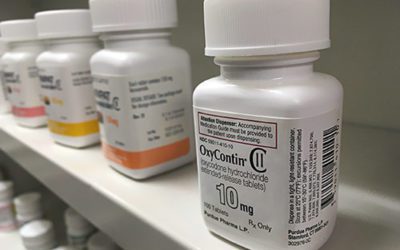
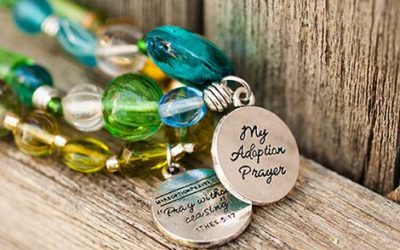

0 Comments